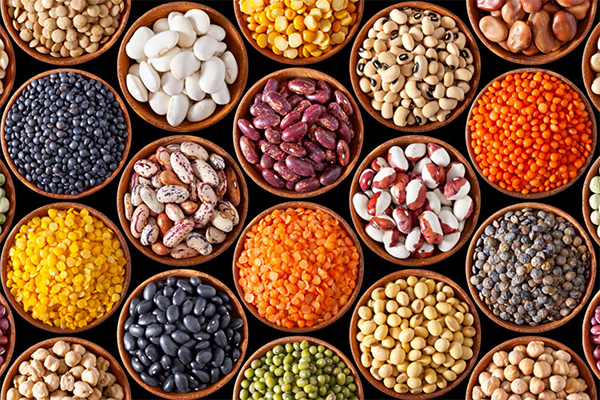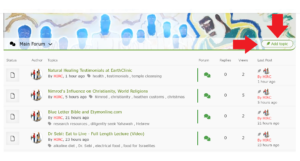ARTICLE: HIRC Diet For Israelites
Do you have brain fog, chronic fatigue or any other chronic conditions? Look to a damaged liver as the likely culprit. We all have clogged livers from living in Esau Edom’s toxic world and accepting his vaccines.
Healing your clogged liver with the soluble fiber of beans can successfully done in between liver flushes, or as a standalone dietary change all on it’s own.
Karen Hurd has sucessfully worked with thousands of chronic conditions and “impossible cases” that saw complete recovery. Using only food as the “medicine”, the dietary changes she oversaw were centered around beans. You do not need to buy supplements or medications. Ditch dairy, grains (including corn), sugar, seed oils and especially anything processed/packaged/produced from Esau Edom’s major food & consumer products companies–their products are designed to poison you–see example in the video below.
Though long, I highly reccomend listening to both podcasts, starting with Karen’s.
*advanced topic disclaimer* Did you catch that it is actually our own metabolic waste that is the real culprit of toxic livers? Through the spirit I believe this primarily comes from our thoughts i.e. negative thoughts poison the body through waste, which then must be cleared by the liver.
From a normal day to day life (in Esau’s corrupt fallen world), toxicity from food AND environment is secondary, in terms of volume, it is less than 5%, whereas 95%+ is of our own creation.
The exception being, however, that the toxins can be much harmful “pound for pound” and when you are overwhelmed by toxicity all at once, or have chronic high levels of exposure, i.e. a vaccination, black mold, junk food, etc. it can be very bad.
After which your liver becomes clogged and EVERYTHING going forward isn’t eliminated properly and causes harm.
PODCAST 3: Interview Karen Hurd: The Bean Protocol for Total Body Wellness
The high amount of soluble fiber from (most) beans removes toxic bile from the body (see article below) which is otherwise reabsorbed. Toxic bile leads to an internal greasy coasting which damages your organs and other hormonal process, which is referred to in traditional Chinese Medicine as Dampness. This phenomenon also explains why raw vegan and carnivore diets, which leading to short term relief from symptoms, creates long term worsening of symptoms, toxic bile is not purged from the body.
Black-eyed peas (cow peas) and Adzuki beans (aka red beans NOT kidney beans) are the best beans for our constitution. Be wary of consuming other kinds.
Regardless, permanent healing starts with repenting and praying to the Most High Yahawah in the name of Yahawashi. If you do not address the various sins that brought your illnesses in the first place, they will only worsen.
I highly recommend dry fasting beforehand to sever demonic ties from your spirit which energetically bind toxins to your physical body. The number and degree depends on the length of the fast and strength of any given devil.
True healing takes place at the spritual level first.
- Job 2:7 | So went Satan forth from the presence of the LORD, and smote Job with sore boils from the sole of his foot unto his crown.
- Matthew 17:18 | And YAHAWASHI rebuked the devil; and he departed out of him: and the child was cured from that very hour. 19Then came the disciples to YAHAWASHI apart, and said, Why could not we cast him out? 20And YAHAWASHI said unto them, Because of your unbelief: for verily I say unto you, If ye have faith as a grain of mustard seed, ye shall say unto this mountain, Remove hence to yonder place; and it shall remove; and nothing shall be impossible unto you. 21Howbeit this kind goeth not out but by prayer and fasting.
- Mark 5:9 | And he asked him, What is thy name? And he answered, saying, My name is Legion: for we are many.
Article from Karen Hurd:
Gall Stones
First things first
I need to state right away that if you are suffering from gall bladder disease, which includes “simple” discomfit to excruciating pain, as well as gall stones, there is an answer that does not include surgery, medications, or ultrasonic blasting of stones. Recovering from gall bladder disease, including the dissolving of large stones that have developed in high numbers is not difficult. I wish that every person and every doctor would read this article and apply it. Then gall bladder disease would be a thing of the past. I know that this is a very strong statement to make, but my clinical experience bears me out, knowledge of bodily function—as well as just plain common sense.
What is a gall bladder?
Sheltered by the liver that covers the gall bladder like a hood is an organ that is a storage facility for bile. “Bladder” is the word for storage facility. “Gall” is the old-fashioned word for bile. It literally means “bitter”. You will know this for certain if you have ever regurgitated bile. It is VERY bitter. The gall bladder stores this bile until it is needed for the digestive process. Bile breaks down the fatty foods that you eat, preparing them for absorption through the intestinal wall. Your gall bladder is located just under your right rib cage, sheltered from harm by the strong bony cage of your ribs.
Bile has more than one purpose
Bile is used in the digestion of the fats that we eat. Bile is also the vehicle that the liver uses to rid the body of fat-soluble toxins. It is this second purpose that it critical to our understanding gall bladder disease.
Main detoxification organ
The liver is the most important detoxification organ that we have. The liver is responsible for filtering the blood, cleaning out all fat-soluble toxins. Most people are not aware of this function of the liver. Most people think that the kidneys alone are responsible for filtering blood. The kidneys do filter blood, but the kidneys only filter out water-soluble toxins. The kidneys are incapable of dealing with fats. It is the liver’s function to handle the fats. Interestingly enough, the preponderance of toxins are fat-soluble, not water-soluble, and in this group of fat-soluble toxins there are many that are very nasty.
Nasty toxins are filtered from the blood, now what?
Once the liver has filtered these toxins from the bloodstream, it is necessary to find a pathway out of the body for this “garbage”. The liver has no access to the urinary tract, so it cannot send its trash away through that system. However, the liver does make bile, and this bile goes to the gall bladder. The gall bladder releases the bile into the duodenum (first part of the small intestine where most digestion takes place). If the bile can travel the length of the intestinal tract and be expelled from the body in a bowel movement, then the liver will have been successful in ridding the body of those toxins that were placed in the bile.
The recycling catch
The bile that is carrying the toxins will be used in the digestive process of breaking down fats. However, not all bile that is released into the duodenum is needed. The unused bile will travel the intestinal tract and a large portion of it will be reabsorbed. The bile (in its constituent parts) will travel back to the liver, toxins in tow. That means that those toxins that had been sent for elimination were not eliminated. Therefore, the liver has to reuse this bile, trying once again to get these nasty poisons out of the body. But there is a catch: the liver continued to filter blood while that bile was on its merry way traveling the intestinal track. The liver has accumulated more toxins that have to be eliminated. So before sending the old bile back to the gall bladder, the liver will tuck in a few more toxins. If the bile recycles yet again, the liver will have to squeeze in even more toxins. Are you beginning to see that the bile that recycles again and again becomes more and more toxic? After time, the bile becomes thicker and extremely noxious. The bile becomes so thick that it actually begins to roll up into little balls. It starts as “grains of sand” and can roll into larger “stones”. Even if the bile never forms stones, it becomes so thick that partial obstruction of the biliary ducts can occur. This blockage of the biliary ducts can cause discomfit and eventually excruciating pain.
Contractions of the gall bladder
The gall bladder uses muscle contraction to propel the bile from the gall bladder out into the duodenum. The bile travels in little pathways that we call biliary ducts. If the gall bladder is pushing the bile through these ducts and it meets resistance because the bile is more dense, discomfit and pain will result. Imagine the gall bladder pushing this digestive fluid through tubes, but the fluid is not moving. That creates a back pressure which is not pleasant to experience. At first, when the bile is just “sludgy”, there will only be a feeling of discomfit in the upper right quadrant—that is the area on the right side of the chest, just underneath the lower bones in the rib cage. As the biliary ducts become partially obstructed with stones, the discomfort will intensify to pain. If the duct becomes even more obstructed, the pain can increase to levels that are unmanageable. A blocked biliary duct can be so painful that the person will think that they are dying, or at least they may wish that they would die. These situations usually result in an emergency room visit which may or may not end with a gall bladder removal, which will most probably not have been necessary. Gall stones, even the largest and nastiest can be dissolved very simply, safely, and relatively quickly (6-8 weeks) using common foods.
How can we dissolve stones?
If we are able to have in the duodenum a substance that will bind with the bile, not allowing its reabsorption, we are on our way. Soluble fiber, being found in the highest concentration in legumes, will bind with bile so tightly, that the bile will not be able to pass the intestinal barrier, and will not be carried back to the liver. Any bile that binds with soluble fiber will be eliminated out of the body through a bowel movement. Soluble fiber is unable to cross the intestinal barrier. Any substance that is bound to this fiber will likewise be unable to cross the intestinal barrier. Therefore, the liver will not receive any bile back from the gastro-intestinal tract. That means that the liver will have to make brand-new bile. This new bile is not loaded down with toxic trash from the last several months and years. It is clean and new. It is able to breakdown any old bile that has become thickened and hardened. As this new bile goes to the gall bladder, it begins to clean up the deposits of old bile. Each time clean, new bile is passed through the gall bladder, more of the old bile is dissolved. Eventually, if we keep up this process, all stones, gravel, and sandy deposits will be totally dissolved and flushed into the duodenum. There this old bile, as well as the new bile, will bind with the soluble fiber. All of the bile will be carried out of the body. The liver will continue to make new bile that will keep the gall bladder clean and healthy.
Bile can dissolve bile?
Absolutely. Oils and fats are some of our best cleansers. Fats break down fats. If we need to break down old bile deposits that have rolled into stones, it is a clean fat that will be able to do the job. That is why it is absolutely necessary to compel the liver to make brand-new, fresh, clean bile. To do this we have to eliminate from the gastro-intestinal tract all the bile that we can so that none will recycle back to the liver. This absence of recycled bile is what will force the liver to produce new bile.
A side benefit
As the gall bladder is being made healthy, your cholesterol and triglyceride levels will be decreasing. The liver makes bile out of the fats in your bloodstream, in other words cholesterol and triglycerides.
But what if I am in pain now?
You can treat an acute gall bladder attack with soluble fiber. Begin to eat legumes immediately if the pain begins. You will notice a lessening of the pain in just a few minutes. The pain will dull and become more bearable. However, in a short time, even as short as 30 minutes, you may again feel the pain. Again, eat legumes. The pain will again lessen. Basically, if you consume the legumes almost constantly, the pain will eventually go away. The bile that is getting into the duodenum is bound with the fiber. That stimulates the liver to release new clean bile that will begin to work on the stones, gravel or sand that is blocking the biliary ducts. If you are in acute pain now, you will need to eat a total of 3 or more cups of legumes spread out over 8-10 times in a day. There is no limit to the number of legumes you may eat, just a minimum intake (3 cups). As you continue to eat the legumes, the pain will continue to lessen.
When will the stones be dissolved?
In a few weeks (6-8), with a high consumption of legumes, the stones will be dissolved. What is a high consumption of legumes? You must eat at least ½ cup of cooked legumes six times a day. Minimum intake is 3 cups. It is important that you spread the 3 cups out into the six ½ cup servings. We want to keep soluble fiber continually in the duodenum to bind with the bile as it is released from the gall bladder. Eating all three cups of beans at one time will not meet this requirement.
What are legumes?
Legumes are what we normally term “soup beans” or “dry beans”. They are pinto beans, kidney beans, garbanzo beans, white beans, navy beans, black beans, lentils, split peas, black-eyed peas, and lima beans, to name just a few.
Legumes are not green beans, wax beans, or soy beans.
Do I have to eat beans cooked from the dry?
No. You may certainly soak your beans and cook them for several hours if you desire, or you may simply purchase canned beans that are already fully cooked. Either way is acceptable.
An illustration
Have you ever changed the oil in a car? What does the oil look like when you drain it out? It is black and gritty. When you put fresh new oil into the engine, what does it look like? It is clear, smooth (no grit) and amber colored. As this new oil circulates through the engine, it picks up carbon and dirt. The oil is keeping the engine toxin-free so that it can run at optimum capacity. If we allowed the same oil to continue to circulate through the engine for a long time—say years—what would eventually happen to the engine? It would lock-up. It would cease to function. Everyone who deals with machinery knows the importance of changing the oil in an engine. It is the same with the human body. The bile is the oil. It is responsible for carrying out toxic trash. However, if we never change the oil, and the old oil continues to circulate over and over again, eventually that oil will lock up the engine. In this case, the engine is the gall bladder that becomes blocked with debris—the debris is the old bile or oil that is so nasty by now, that the gall bladder is no longer able to function properly. What is the answer? Change the oil. The new oil (bile) will clean out all the old bile deposits and the gall bladder will be restored to health.
Plan for Healing
Consume six ½ cup servings of cooked legumes each day. At each of these six times, you may eat more than ½ cup of legumes—however, you must consume at least a minimum of ½ cup. It is important that you eat the beans six times, not all at once. The goal is to keep soluble fiber present almost continually so that maximum binding of bile will take place. Maximum binding of bile to soluble fiber will give us maximum bile elimination from the body, thus causing the liver to produce brand-new bile.
Plan for Acute Gall Bladder Attacks—Pain Management
Hang your head over a bowl of beans and eat them spoonful by spoonful until the pain subsides. When it returns, return to your bowl of beans. Continue this until the gall bladder attack subsides. Then immediately continue with the Plan for Healing.
Plan for Prevention
If you do not currently have gall bladder troubles, and do not wish to experience them, then make it a part of your normal menu to have legumes at least 4-5 times weekly.
A Note about the Plans for Healing
You will notice that the Plans for Healing on my various articles as published on my web site include the use of supplements (in the majority of cases). I have included them at this time because most of the people that access my web site, I never have the opportunity to speak to personally. Therefore, I cannot address each person’s particular situation as it warrants. The supplements will certainly help, however, be aware that food alone can cure, without the use of supplements.
In fact, it is my goal to be able to see healing with food alone. In my private practice, where I counsel clients individually, it is only occasionally that I might recommend the use of supplements. Food is powerful. As Hippocrates said, “Let food be thy medicine, and thy medicine be food.” That is also my philosophy.
Further Reading:
ARTICLE: Hebrew Israelite Research Center Liver Flush Protocol & Experience
ARTICLE: What Is A Liver Flush?
ARTICLE: Pottinger’s Cats, Dr. Bobby Price on Testosterone Levels, Diet, Fatty Liver in your 20s 30s & 40s
ARTICLE: Most Have Some Form of it Fatty Liver Disease
ARTICLE: Sclerology And Photo Examples Of Jaundiced Eyes (Dry Fast Podcast)
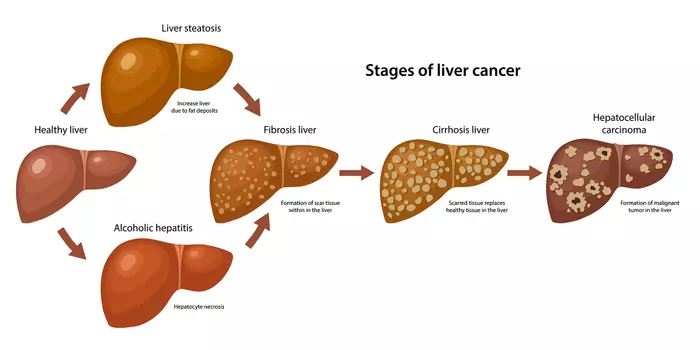
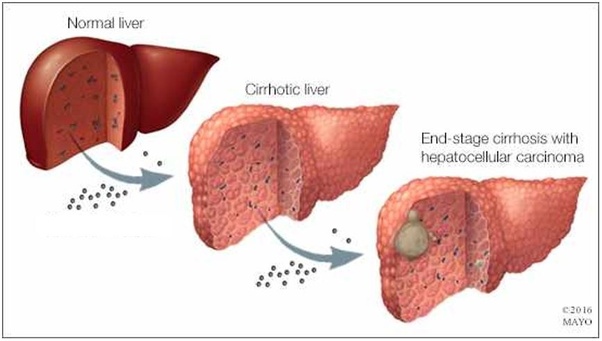
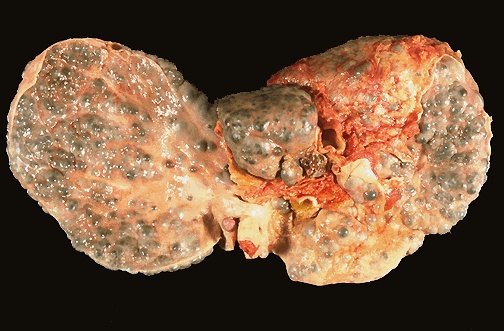

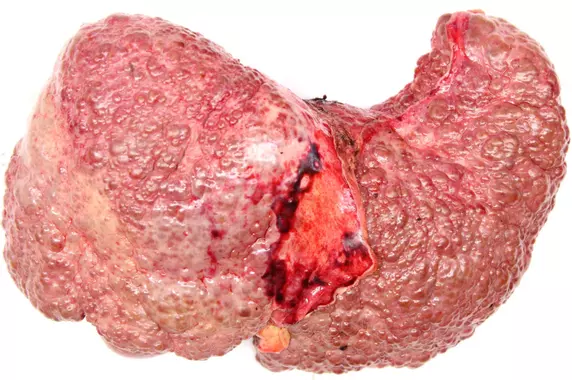

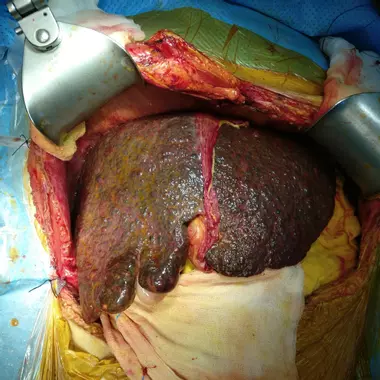
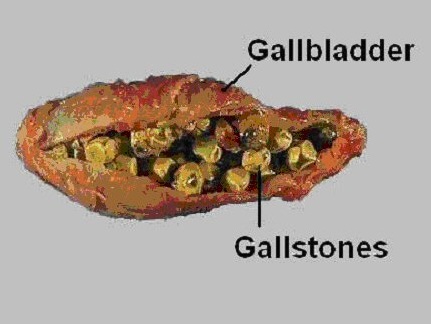
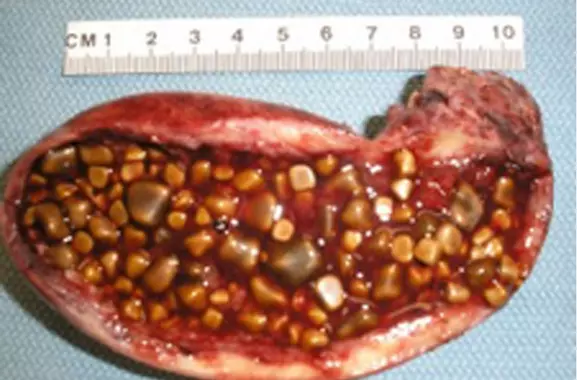
Source: Wikpedia
Cirrhosis, also known as liver cirrhosis or hepatic cirrhosis, and end-stage liver disease, is the impaired liver function caused by the formation of scar tissue known as fibrosis due to damage caused by liver disease.[6] Damage to the liver leads to repair of liver tissue and subsequent formation of scar tissue. Over time, scar tissue can replace normal functioning tissue, leading to the impaired liver function of cirrhosis.[6][7] The disease typically develops slowly over months or years.[1] Early symptoms may include tiredness, weakness, loss of appetite, unexplained weight loss, nausea and vomiting, and discomfort in the right upper quadrant of the abdomen.[8] As the disease worsens, symptoms may include itchiness, swelling in the lower legs, fluid build-up in the abdomen, jaundice, bruising easily, and the development of spider-like blood vessels in the skin.[8] The fluid build-up in the abdomen develop spontaneous infections.[1] More serious complications include hepatic encephalopathy, bleeding from dilated veins in the esophagus, stomach, or intestines, and liver cancer.[9]
Cirrhosis is most commonly caused by alcoholic liver disease, non-alcoholic steatohepatitis (NASH – the progressive form of non-alcoholic fatty liver disease),[10] heroin abuse,[11] chronic hepatitis B, and chronic hepatitis C.[8][12] Heavy drinking over a number of years can cause alcoholic liver disease.[13] Liver damage has also been attributed to heroin usage over an extended period of time as well.[14] NASH has a number of causes, including obesity, high blood pressure, abnormal levels of cholesterol, type 2 diabetes, and metabolic syndrome.[15] Less common causes of cirrhosis include autoimmune hepatitis, primary biliary cholangitis, and primary sclerosing cholangitis that disrupts bile duct function, genetic disorders such as Wilson’s disease and hereditary hemochromatosis, and chronic heart failure with liver congestion.[8]
